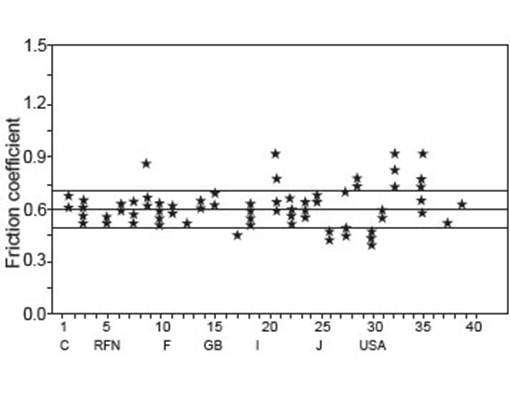A figure showing the coefficient of friction vs. country. The friction between identical steel and the aluminum oxide samples was tested in various labs in the world; surfaces of samples had the same roughness parameters, the ambient of every test was similar (special air conditioned rooms); the load applied on samples (pressures) and sliding speed were the same. Friction coefficients values obtained in tests in various laboratories under the programme VAMAS (http://www.vamas.org): Canada (C), Federal Republic of Germany (RFN), France (F), Great Britain (GB), Italy (I), Japan (J), United States of America (USA).

Figure from Prof. Eran Bouchbinder (Weiztmann Institute of Science), who received it from Prof. Tomas Polcar (Head of National Centre for Advanced Tribology, University of Southampton) after he presented it in a conference earlier this year.
These data raise question whether we can rely on the coefficient of friction as the main parameter which characterizes friction.